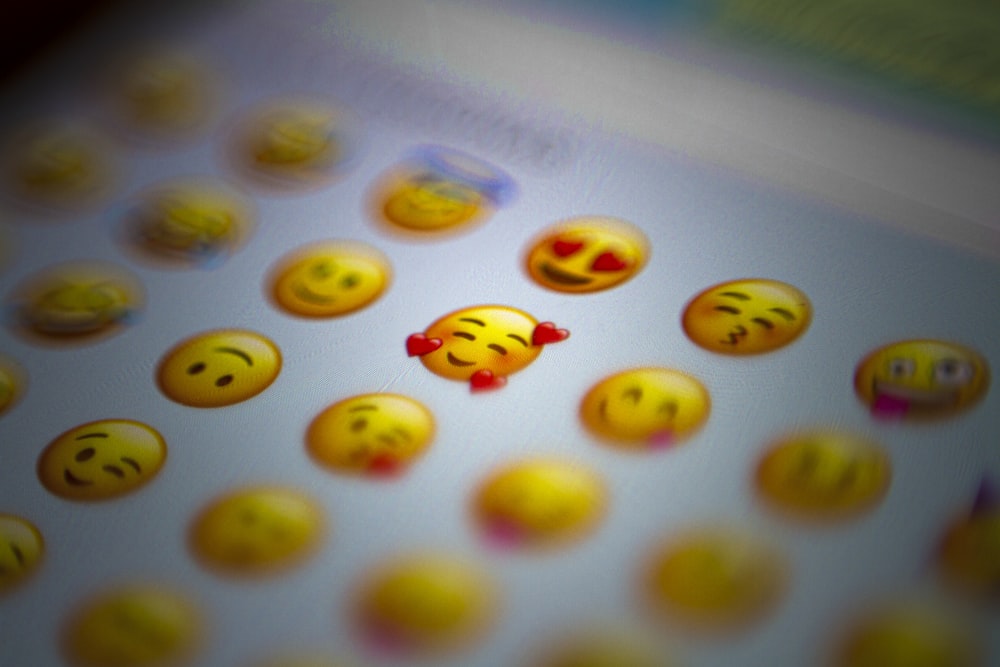目次
絵文字ベースのFace scaleが疼痛評価に有用?
理学療法士・作業療法士が疼痛の強度を評価する場合に用いられるのが,NRSやVASといったスケールです.
ただNRSやVASって高齢者には分かりにくい側面がありますので,Face scaleを用いて疼痛の強度を評価することもあります.
今回はこのFace scaleを絵文字ベースとした評価方法が疼痛評価に有効かどうかを明らかにした研究論文をご紹介させていただきます.

今回ご紹介する論文
Research Letter July 12, 2022
Comparison of an Emoji-Based Visual Analog Scale With a Numeric Rating Scale for Pain Assessment
Shuhan He, MD1,2,3; Angela Renne, BS4; Dias Argandykov, MD4; et alDavid Convissar, MD5; Jarone Lee, MD, MPH2,3
Author Affiliations
JAMA. 2022;328(2):208-209. doi:10.1001/jama.2022.7489
今回ご紹介する論文は2022年に掲載された論文です.
研究の方法
To establish the validity of an emoji-based pain scale, we surveyed patients admitted to the emergency department or surgical units at Massachusetts General Hospital from October 2021 to January 2022. The study was approved by the Mass General Brigham institutional review board and verbal informed consent was obtained from patients. Patients’ race and ethnicity were taken from electronic medical records to account for participant diversity. Race categories were African American, American Indian/Alaska Native, Asian, Native Hawaiian/Pacific Islander, White, and other (any race not listed). Ethnicity was assessed as Hispanic/Latinx or non-Hispanic/non-Latinx. A convenience sample was used, and no patient refused the survey. Patients were surveyed regardless of presence of pain.
絵文字ベースの疼痛スケールの妥当性を確立するため,2021年10月から2022年1月にかけてマサチューセッツ総合病院の救急部または外科病棟に入院した所る英を対象として調査を行っております.
この研究はMass General Brighamの施設審査委員会の承認を得ており,症例から口頭でのインフォームドコンセントを得ております.
対象者の多様性を考慮して症例の人種と民族性は電子カルテから取得しております.
人種はアフリカ系アメリカ人,アメリカインディアン/アラスカ先住民,アジア人,ネイティブハワイアン/太平洋諸島民,白人,その他(記載されていない人種)のカテゴリーとしております.
民族はヒスパニック/ラテン系,非ヒスパニック/非ラテン系で評価しております.
便宜的なサンプルを使用し,調査を拒否した症例は皆無でありました.
症例は疼痛の有無にかかわらず調査対象となりました.
研究の方法
The emoji-based pain scale was composed of 6 icons (Figure) modeled after the extensively studied and validated Wong-Baker FACES Scale. The numeric rating scale ranged from 0 to 10. To minimize bias, we randomized patients to 1 of 2 groups, rating pain on the emoji-based scale first or numeric rating scale first. The randomization sequence was performed by generating an equally proportionate binary code, assigning numeric as 0 and emoji as 1. For statistical purposes, emoji were assigned a numeric value of 0, 2, 4, 6, 8, and 10. The 11 possible numeric responses were treated as ordinal outcome measures and allocated into 6 categories (0 [0, no pain], 2 [1-2], 4 [3-4], 6 [5-6], 8 [7-8], and 10 [9-10, worst pain]). A weighted Cohen κ accounted for degrees of disagreement between the emoji-based scale and numeric rating scale. To achieve statistical significance for weighted κ with 6 ordinal categories, a sample size of 84 patients was needed to achieve 80% power. We used Stata version 17 (StataCorp) for data analysis. Statistical significance was set at a 2-sided P < .05.
絵文字を用いた疼痛尺度は,広く研究され検証されたWong-Baker FACES Scaleをモデルにした6つのアイコン(図)で構成されております.
また評価スケールは0から10までの数字で構成されております.
バイアスを最小限にするため症例を2つのグループに無作為に割り振り,絵文字ベースのスケールを先に評価するか,数値評価スケールを先に評価するかを決定しております.
無作為化の順序は均等に比例する2進コードを生成し,数値スケールを0,絵文字スケールを1として割り当てております.
統計学的解析のため絵文字には0,2,4,6,8,10の数値を割り当てております.
11個の数値回答は順序的な結果指標として扱われ,6つのカテゴリー(0[0,痛みなし],2[1-2],4[3-4],6[5-6],8[7-8],10[9-10,最悪の痛み])に配分されております.
重み付きCohen κは絵文字ベースの尺度と数値評価尺度間の不一致の程度を説明するものでした.
6つの順序カテゴリーで重み付けκの統計的有意性を得るには,80%の検出力を得るために84例の症例をサンプルサイズとする必要がありました.
データ解析にはStata version 17(StataCorp)を使用しております.
統計学的有意水準は両側5%としております.
研究の結果
The final sample size was 109 patients. The median age of patients was 65 (IQR, 52-75) years. A total of 47.7% of patients were female, 82.6% were White, and 88.1% were ethnically not Hispanic or Latinx. Among the 98 patients who experienced pain, the types were abdominal (45.9%), chest (13.8%), back (13.8%), and extremity (12.8%). Among 109 patients, 53 patients rated the emoji-based scale first and 56 rated the numeric scale first. The median pain scores using either a numeric pain scale or emoji scale were 4 (IQR, 2-7) and 4 (IQR, 2-8), respectively. The overall agreement between the emoji-based visual analog pain scale and the numeric rating scale was a weighted κ of 0.84 (95% CI, 0.77-0.87; P < .001) (Table). The agreement for the group rating the emoji scale first was a weighted κ of 0.87 (95% CI, 0.82-0.92; P < .001) and for the group rating the numeric scale first was 0.80 (95% CI, 0.74-0.85; P < .001). There was no significant difference between the groups (P = .58).
最終的なサンプルサイズは109例でありました.
症例の年齢の中央値は65歳(IQR、52-75)でありました.
症例の47.7%が女性で82.6%が白人,88.1%が民族的にヒスパニックまたはラテン系でありました.
痛みを経験した98例のうち,疼痛の種類は腹部(45.9%),胸部(13.8%),背部(13.8%),四肢(12.8%)でありました.
109例の症例のうち,絵文字を用いた尺度を最初に評価した患者は53例,数字を用いた尺度を最初に評価した症例は56例でありました.
疼痛スケールの数値と絵文字スケールを用いた痛みのスコアの中央値は,それぞれ4(IQR,2-7),4(IQR,2-8)でありました.
絵文字を用いた視覚的アナログ疼痛尺度と数値評価尺度の全体的な一致度は、重み付けκが0.84(95%CI, 0.77-0.87; P < 0.001)でありました.
絵文字尺度を先に評価した群の一致度は,重み付けκが0.87(95%CI、0.82-0.92、P < .001),数値尺度を先に評価した群は0.80(95%CI、0.74-0.85、P < .001)でありました.
順序による群間差はありませんでした(P = 0.58).
研究の考察
This study demonstrated a high level of agreement between an emoji-based visual analog pain scale and a numeric rating scale in a sample of patients in 1 hospital. Easily adapted to digital platforms, emoji are an open-source, visual option that could be a low-cost alternative to the numeric rating scale. Limitations of the study are the lack of a diverse population and use of a convenience sample rather than a random or purposive sample. Further work is needed to validate the emoji-based scale in diverse populations and with different types of scales.
この研究では,1つの病院の症例サンプルにおいて,絵文字ベースの視覚的アナログ疼痛尺度と数値評価尺度との間に高いレベルの一致性があることが示されました.
デジタルプラットフォームに容易に適応できる絵文字は,オープンソースの視覚的なオプションであり,数値評価スケールの低コストな代替となり得ます.
この研究の限界は,多様な母集団が存在しないことと,無作為または目的別サンプルではなく,便宜的なサンプルを使用している点です.
多様な母集団や異なるタイプの尺度で絵文字ベースの尺度を検証するためにさらなる研究が必要であります.
今回はFace scaleを絵文字ベースとした評価方法が疼痛評価に有効かどうかを明らかにした研究論文をご紹介させていただきました.
疼痛評価として絵文字を用いた場合とNRSによる数値評価が高い一致度を示したというのは驚きですね.
これまでにもFace scaleは報告されておりましたが,こういった絵文字はより使いやすい指標になりそうですね.
Web調査なんかでも活躍しそうです.
日本の絵文字が脚光を浴びるのは嬉しいことですね.






